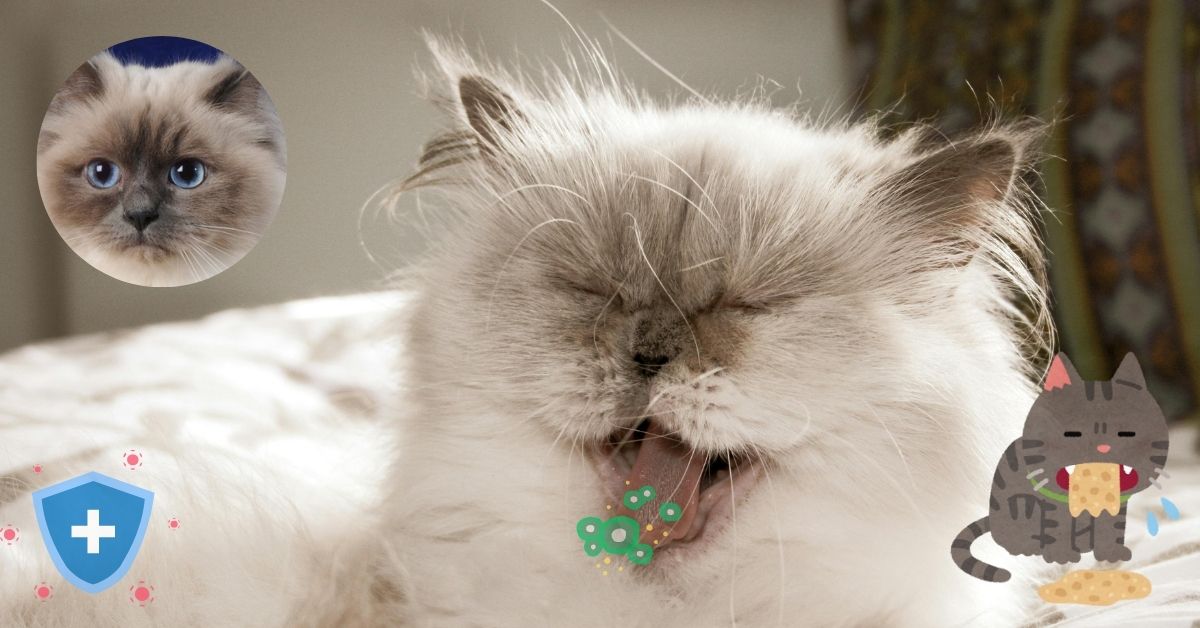Suppose you are concerned about the Himalayan cat health issues. In this article, we will tell you about all the diseases and health issues related to it. Due to being flat-faced, there are chances of respiratory diseases. but there is no need to worry because taking care of them can save them from many diseases.
Hemmies are known for their fluffy fur and playful nature. Its nature is quite affectionate and playful. The Himalayan cat requires daily grooming and lots of attention.
Characteristics of Himalayan Cat
This medium-sized cat has a long and dense coat and their body weight is around 10 to 15 Pound. Males are usually big and have more weight than females. Their biggest identity is their beautiful blue eyes. Hemmies color pattern is pointed, which means that points on the body are dark in color such as ears, nose, and tail are darker than the rest of the body. Their chubby cheeks make them more cute and attractive.
List of Himalayan cat health issues
Polycystic Kidney Disease
Breathing Issues
Hairball
Progressive retinal atrophy
Skin Problems (Progressive retinal atrophy)
Heart Disease
1. PKD (Polycystic kidney disease)
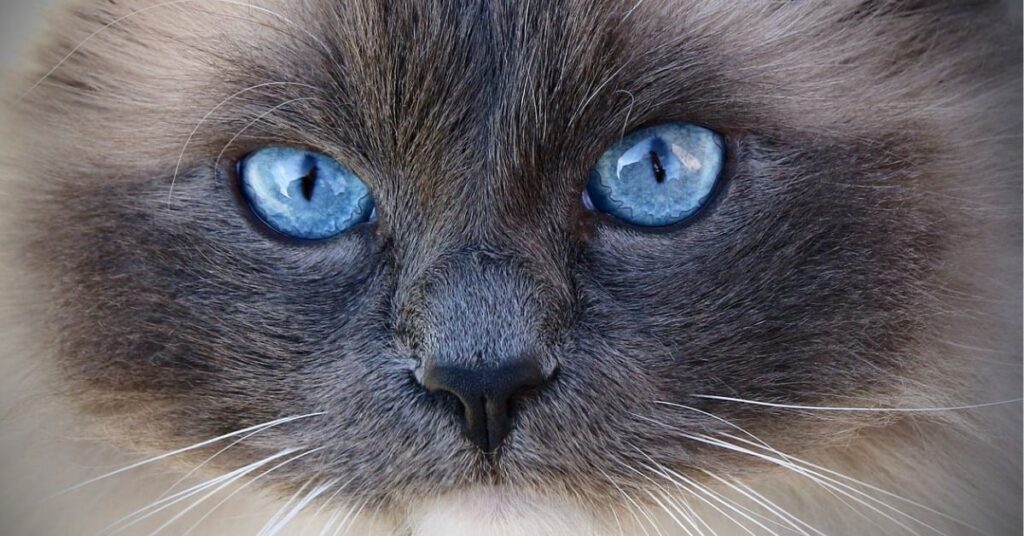
This disease arises due to the presence of multiple cysts in the kidney. This disease does not occur suddenly and in the beginning, there is no danger of death. But if it is not treated at the right time, it can lead to the death of your Himalayan cat. PKD is an inherited disease. It can come from parents’ genetics. This disease is transmitted to kittens through the genetics of their parents.
If your Himalayan cat stops eating, it may be a sign that he is sick. Apart from this, there are many other symptoms by which you can detect your cat’s disease and treat it.
Symptoms
It can be difficult to predict the PKD by looking at the cat’s outer body. This can be made clear by an ultrasound done by the vet. Still, there are some early symptoms by which you can guess it.
- Vomiting repeatedly
- Loss of appetite
- Drinking more water than normal
- Urinating excessively
- Weakness
- Treatment
There is no specific treatment for PKD (Polycystic kidney disease), but if this disease is detected at the right time, it can be prevented from progressing further. The cat’s pain can be reduced with the help of a vet-recommended diet, medication, fluid therapy, and some antibiotics prescribed by the vet. This will also give it relief from vomiting and pain.
2. Breathing issues
It is common for Himalayan cats to have breathing issues due to their facial structure. Face cats are very much in trend these days and are becoming very popular all over the world like Punch Face Persian cat and Extreme Punch Face Himalayan. All cats and dogs with short muzzles are at risk for respiratory problems. for example Pug in Dog Breeds
Brachycephaly Meaning?
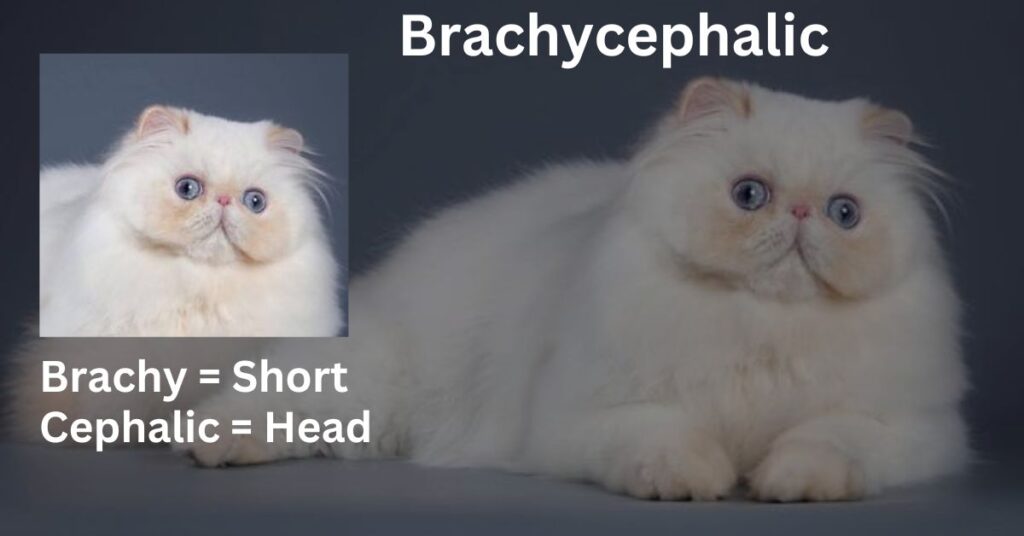
Brachycephalic is the term used for flat-faced cats. Brachy means short and the cephalic word comes from head. The first flat-faced cat was born from a genetic mutation in 1950. In Brachycephalic conditions, the nostrils of the Himalayan cat are very narrow, due to which the airflow is not proper and causes breathing problems.
Cause of Brachycephalic Airway Syndrome
- The diameter of the windpipe of Hemmies is also smaller than that of other cats
- The size of their soft palate is large to their mouth, which slightly blocks the windpipe.
- Short windpipes and long soft palates are some of the main reasons for the breathing issues of Himalayan cat
Symptom Brachycephalic Airway Syndrome
- Sound while breathing
- Cough
- Mouth breathing
- Snoring while sleeping
- Not to sneeze openly
3. hairballs in Himalayan cats
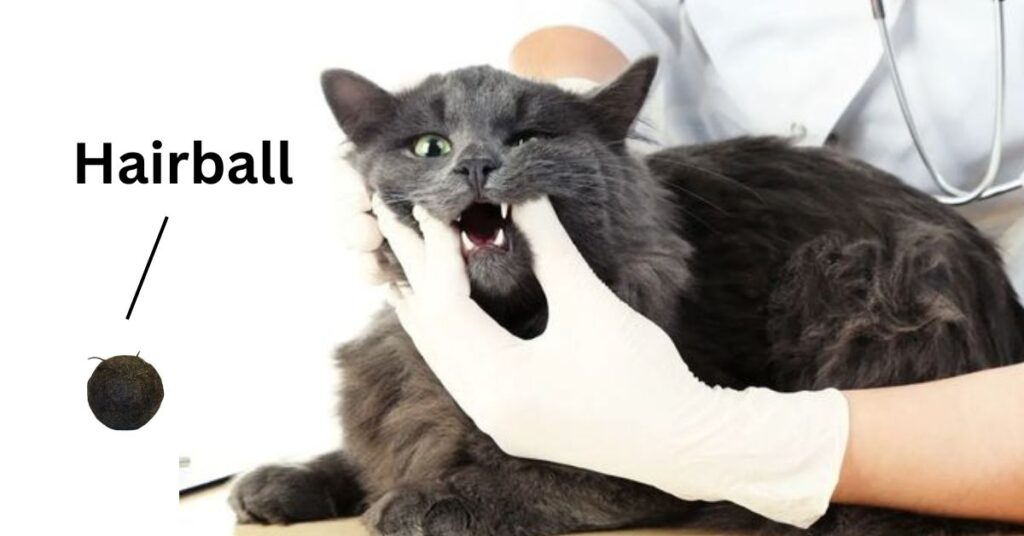
Hemmie is a long-furred cat. Due to their habit of licking dead hairs and grooming themselves, they swallow a lot of hair which gets collected in their stomach and takes the shape of a ball. Cats spit out hairballs. It is normal to have a hairball. The problem occurs when a hairball sometimes gets stuck in the cat’s throat, which causes difficulty in breathing and sometimes their life can also be in danger.
Symptoms
- Gagging
- Retching
- Diarrhea
- Constipation
- Vomiting
How to stop hairballs in cats?
- Regular Grooming and Brushing
- Add Fiber to their diet (Apple, Pumpkin Powder, and cat grass)
- A teaspoon of Olive oil (once a week) to lubricate the digestive tract
- Increase their water intake
- Use hairball prevention products
- You can give Laxatone gel to your cat 2 to 3 times a week.
Can I give my cat coconut oil for hairballs?
Due to the lubricant properties of coconut oil, hairballs come out easily. Some people say that coconut oil also kills the parasites growing in the stomachs of Himalayan cats. Consult a certified veterinarian before giving coconut oil to your Himalayan.
4. Progressive retinal atrophy
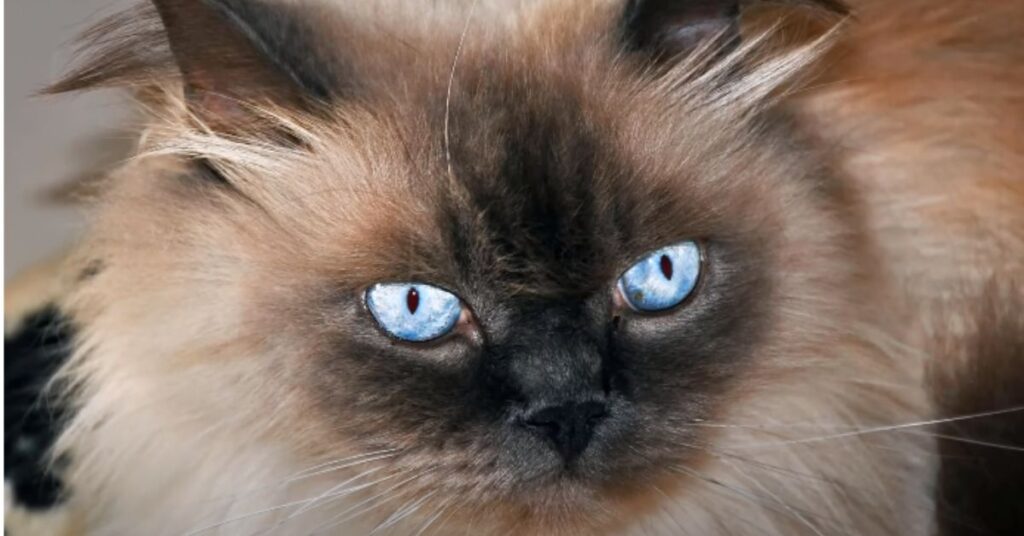
This disease is not understood in the initial stages. Over time, your cat’s vision begins to become blurry, then within one to two years, Your cat may go completely blind. Blindness in cats is not like that of humans because their senses are sharper than humans.
A Himalayan suffering Progressive retinal atrophy can easily live in your house through their senses. You just do not have to change the location of furniture and accessories in your house too much.
Cataracts are a major cause of blindness in cats. Cataracts can also be caused by a deficiency of Taurine amino acids. This amino acid is available in commercial cat food.
Symptoms
- Wobble
- Bump into stuff
- Fear of darkness
- Night blindness
Treatment of PRA (Progressive retinal atrophy)
No specific treatment has been found yet, but if its signs are detected in the early stage, it can be prevented by taking some supplements, vitamins, and antioxidants. This can reduce the stress on their retina and eye cells, thus preventing cataracts.
5. Ringworm in Himalayan cat
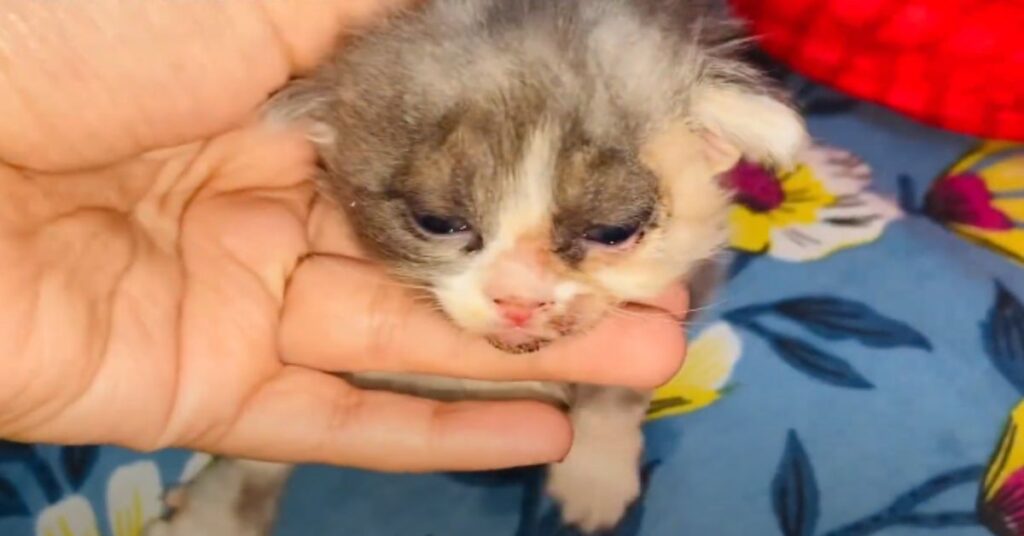
Ringworm is not a worm, it is a type of fungal infection that is also seen in dogs, cats, and humans. It appears in the pink-colored round-shaped wound on the skin of a Himalayan cat. It is a communicable fungal infection that can spread from one person to another.
This fungus can be spread from one infected pet to another through its used food utensils, brush, litter box, bedding, and breeding. This fungus becomes noticeable 15 days after coming in contact with the infected pet.
In some cases, it may take 3 to 4 weeks for its signs to appear.
Symptoms
- Round red patches on the skin
- Itching on the tip of the ears
- Flaky skin over the infected area
- Nail infection
Treatment of Ringworm
Itraconazole is a medicine most recommended by vets for fungal infections like ringworm. Since it is in capsule form, it may be difficult to give it to the Himalayan cat, but you can give it by diluting it in water.
Apart from this, there are many anti-fungal ointments available in the market. You can also use lime sulfur solution
6. Heart disease
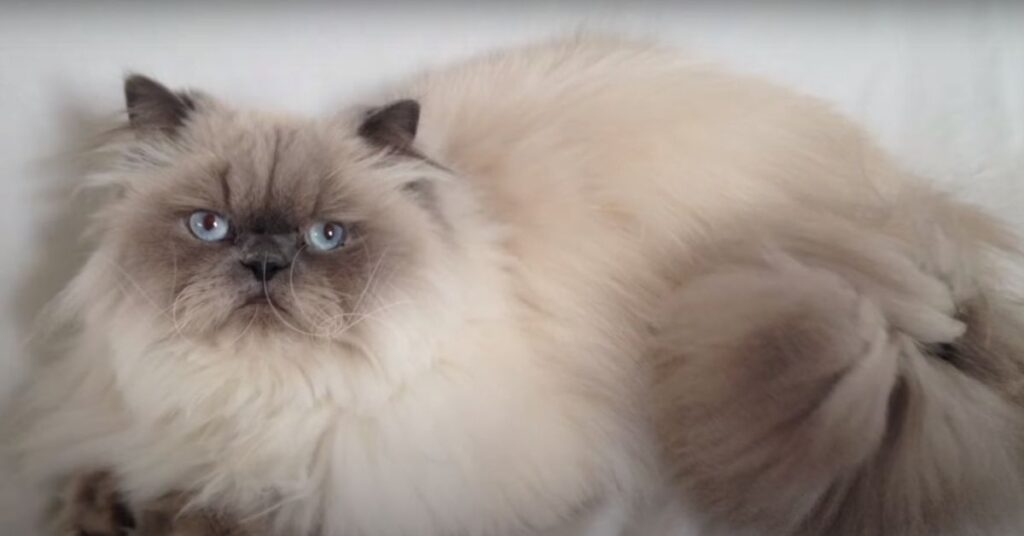
There are two types of heart disease in cats: congenital and adult-onset.
congenital disease: This disease occurs in kittens from birth. Its symptoms also start appearing in adulthood. But sometimes no symptoms are seen for many years.
Adult-onset: These diseases occur several times in cats in adulthood. Cardiomyopathy is one of the most common diseases in the Himalayas. Cats with high blood pressure become more difficult to treat in HCM (Hypertrophic cardiomyopathy).
Symptoms
- Weak Pulse rate
- Getting tired quickly while playing or exercising
- Exhaustion
- Barely breathe
- Collapse
- Epileptic seizures
How long do Himalayan cats live
Himalayan cat lifespan is around 10 to 15 years
How long can you leave a Himalayan cat alone?
Can survive alone with fresh water and food for 24 to 30 hours
Can Himalayan cats have short hair
Himalayan is known for its long fur.
Disclaimer
Whatever information given here related to any diseases, symptoms, and treatment of Himalayan cats is for educational and informational purposes only. Here, we do not claim to cure any disease, You can use this information at your convenience, but before taking any action, please consult your cat’s veterinarian.

I am Saral Kumar, a passionate blogger who dedicates my time to providing valuable information on pet care, especially cats. I create content that helps cat owners to understand their furry friends better and take care of them. I have spent the last decade trying to understand cats better. So I am sharing my valuable insights and tips with my fellow cat enthusiasts through writing.
